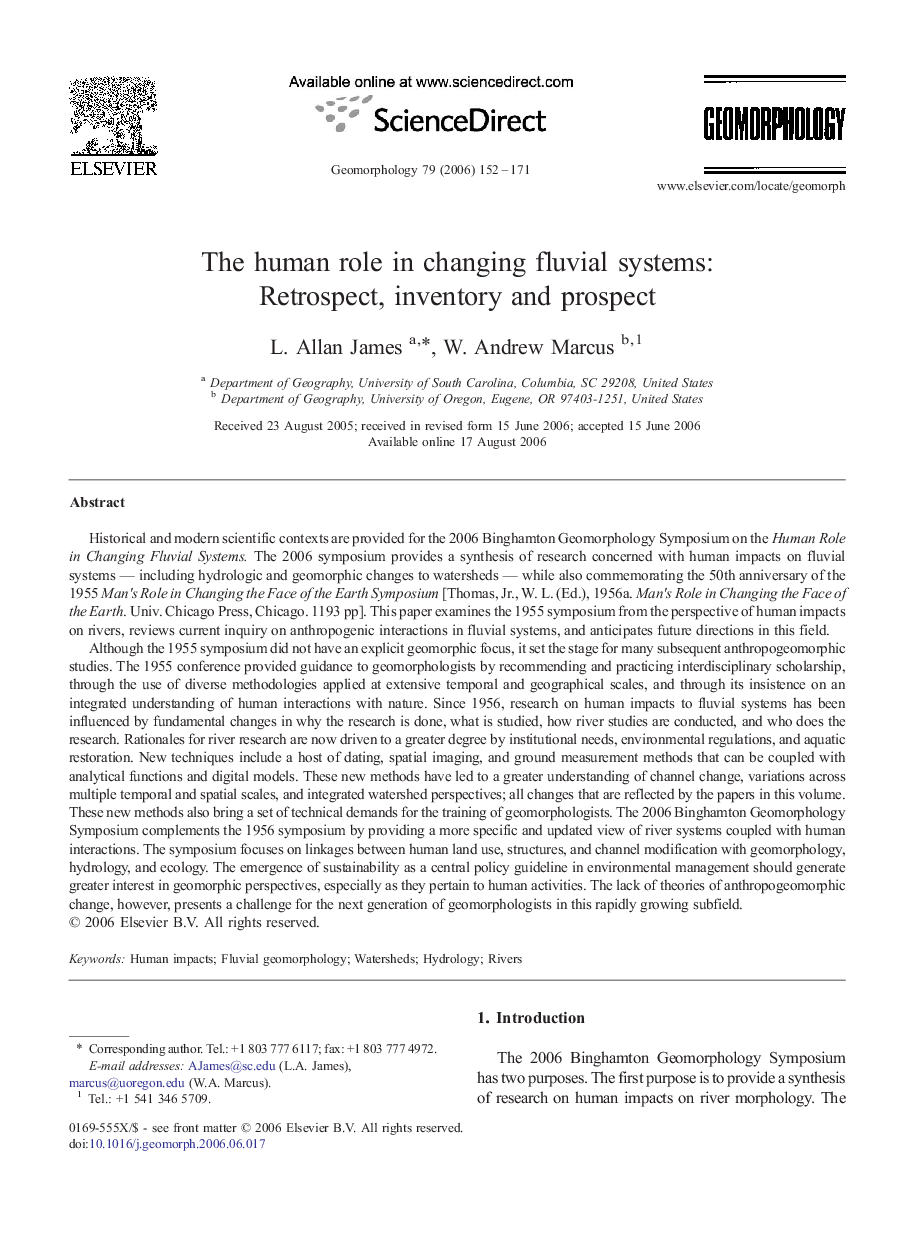| کد مقاله | کد نشریه | سال انتشار | مقاله انگلیسی | نسخه تمام متن |
|---|---|---|---|---|
| 4687482 | 1635593 | 2006 | 20 صفحه PDF | دانلود رایگان |

Historical and modern scientific contexts are provided for the 2006 Binghamton Geomorphology Symposium on the Human Role in Changing Fluvial Systems. The 2006 symposium provides a synthesis of research concerned with human impacts on fluvial systems — including hydrologic and geomorphic changes to watersheds — while also commemorating the 50th anniversary of the 1955 Man's Role in Changing the Face of the Earth Symposium [Thomas, Jr., W. L. (Ed.), 1956a. Man's Role in Changing the Face of the Earth. Univ. Chicago Press, Chicago. 1193 pp]. This paper examines the 1955 symposium from the perspective of human impacts on rivers, reviews current inquiry on anthropogenic interactions in fluvial systems, and anticipates future directions in this field.Although the 1955 symposium did not have an explicit geomorphic focus, it set the stage for many subsequent anthropogeomorphic studies. The 1955 conference provided guidance to geomorphologists by recommending and practicing interdisciplinary scholarship, through the use of diverse methodologies applied at extensive temporal and geographical scales, and through its insistence on an integrated understanding of human interactions with nature. Since 1956, research on human impacts to fluvial systems has been influenced by fundamental changes in why the research is done, what is studied, how river studies are conducted, and who does the research. Rationales for river research are now driven to a greater degree by institutional needs, environmental regulations, and aquatic restoration. New techniques include a host of dating, spatial imaging, and ground measurement methods that can be coupled with analytical functions and digital models. These new methods have led to a greater understanding of channel change, variations across multiple temporal and spatial scales, and integrated watershed perspectives; all changes that are reflected by the papers in this volume. These new methods also bring a set of technical demands for the training of geomorphologists. The 2006 Binghamton Geomorphology Symposium complements the 1956 symposium by providing a more specific and updated view of river systems coupled with human interactions. The symposium focuses on linkages between human land use, structures, and channel modification with geomorphology, hydrology, and ecology. The emergence of sustainability as a central policy guideline in environmental management should generate greater interest in geomorphic perspectives, especially as they pertain to human activities. The lack of theories of anthropogeomorphic change, however, presents a challenge for the next generation of geomorphologists in this rapidly growing subfield.
Journal: Geomorphology - Volume 79, Issues 3–4, 30 September 2006, Pages 152–171